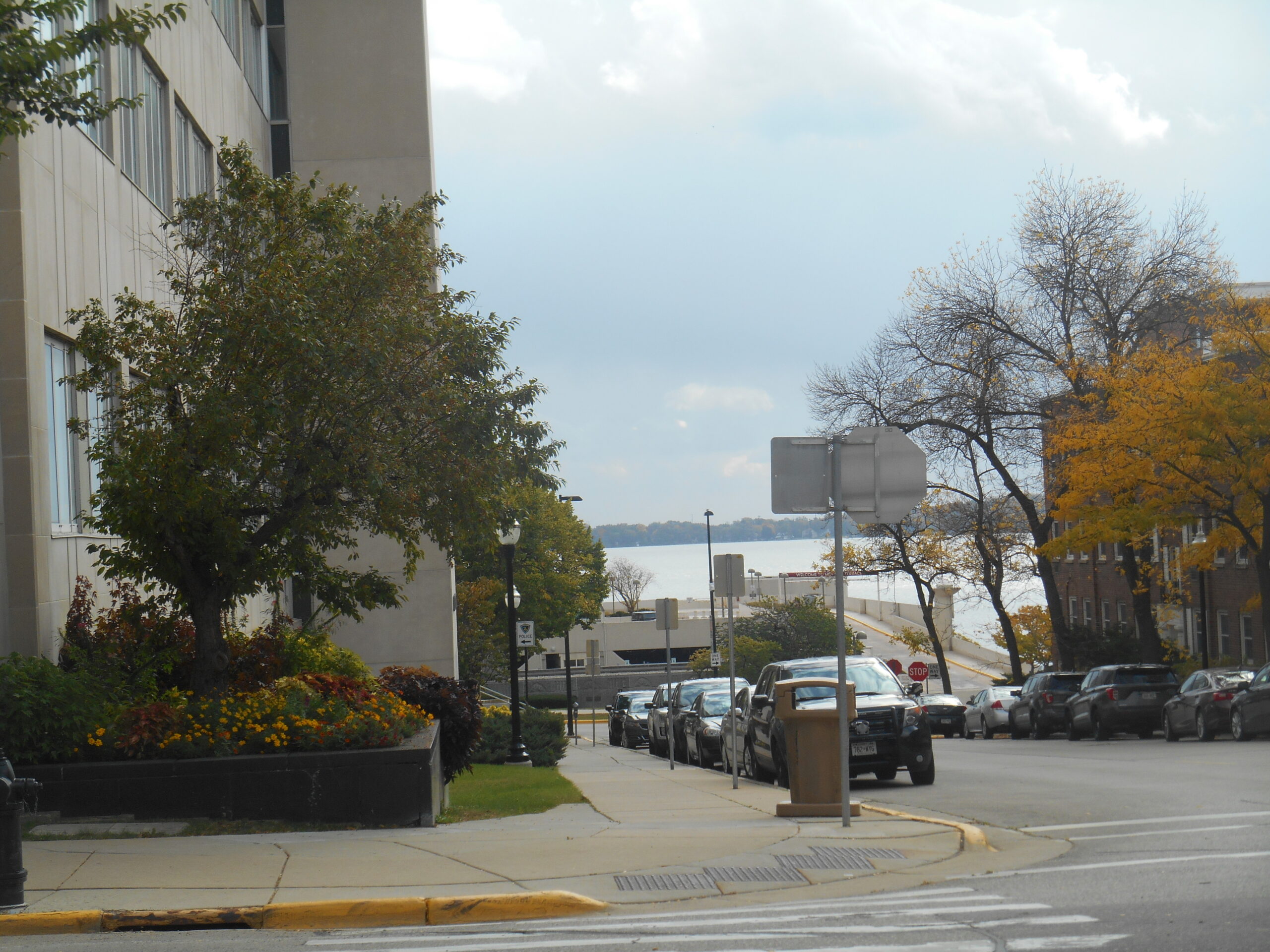[Above, looking south down S. Fairchild: Madison’s City-County Building on the left, City Engineering/Stormwater Program offices on the first floor along the street, Monona Terrace parking ramps visible at the end of the street; Photo-Maria Powell]
~~~
Part IV of “What Else Could Hurt Lake Monona?” told the story of how Monona Terrace failed to become the model of stormwater runoff control that center proponents and city leaders agreed it should be before approving it in 1994. Nobody seemed to care at the time.
Now, everyone has apparently forgotten about it, including the head of Madison’s stormwater program, Greg Fries, who co-wrote the Storm Water Management Plan for Monona Terrace in 1995. When I asked him about it last month, he said he hadn’t seen any records related to stormwater management at Monona Terrace in decades. So the city hasn’t monitored stormwater runoff from the center into city storm drains for over two decades, nor has Fries been concerned about it (though it’s half a block from his office–see above photo).
The Part IV post was too long to consider the city’s roles then and now under DNR’s stormwater laws for municipalities under NR 216, first promulgated in 1994 just before construction of the center began. These laws give Madison responsibilities and authorities to regulate and monitor stormwater discharging into and from its municipal separate storm sewer systems (MS4) into our waterways.**

There are numerous large city storm drains that flow through Law Park, next to and under Monona Terrace, discharging directly into Lake Monona (one is depicted on the right; photo, Maria Powell).
This storm drain and several others in Law Park travel through an old city landfill known to be leaching toxic contaminants into the lake.
Completely ignoring stormwater runoff from Monona Terrace directly into city storm drains that go through a landfill and discharge to a highly impaired waterway seems to violate some NR 216 MS4 requirements.
Does it? Madison owns Monona Terrace. Are there loopholes and exemptions in NR 216 that leave the city off the hook?
Who knows. Maybe. Either way, as we outlined in 2019, and Steve Verburg reported in the Wisconsin State Journal that year, the city and county tend to blow off many of these NR 216 MS4 stormwater laws with no legal or political consequences (and no shame). This is especially the case when the entities discharging the stormwater are government-owned entities.
Here’s the current WPDES MS4 permit the city is operating under. Is it following these requirements in regards to stormwater runoff from Monona Terrace into its storm drains?
To be continued, maybe…
~~~
** The Part IV post also didn’t consider the possible role of Madison General Ordinances, MGO 7.46/7.47, first promulgated in June 1975, designed “to prevent any potentially polluting substance from reaching lakes or streams where it can create hazard to health, a nuisance or produce ecological damage and to assess responsibility and costs of clean-up to the responsible party.”

